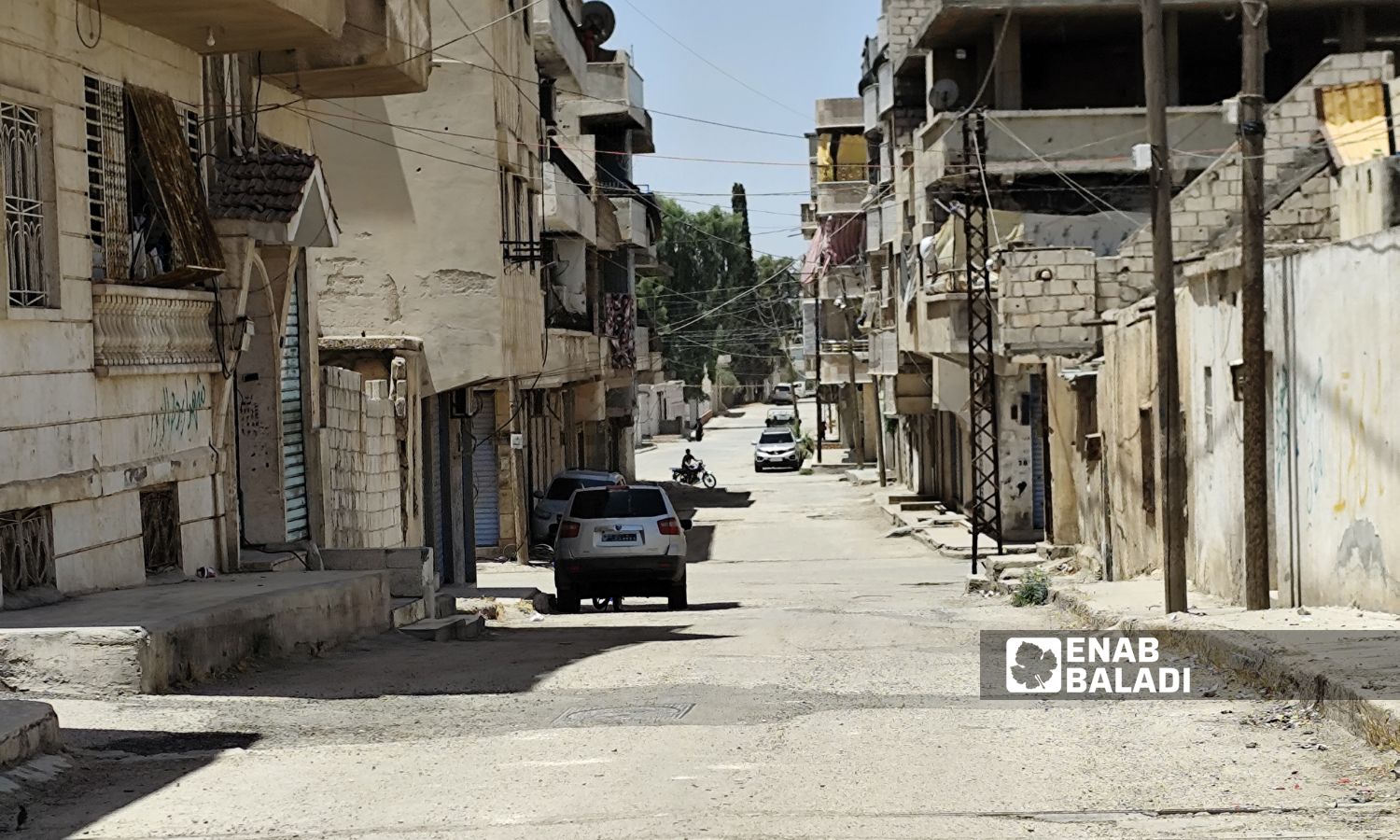



Enab Baladi – Ras al-Ain
The city of Ras al-Ain is witnessing a growing demand for housing due to the arrival of people and families from areas controlled by the Syrian Democratic Forces (SDF) and those displaced from Turkey. This has created difficulties in finding housing for them, increasing rental prices, and imposing strict leasing conditions.
According to real estate shop owners interviewed by Enab Baladi, there is a shortage of housing supply in the city, with almost all the homes being reserved amid increasing demand for housing over the past year.
Hussein al-Mahmoud told Enab Baladi that he has been searching for a suitable rental home in Ras al-Ain for over a year since he and his family were displaced from Turkey, but to no avail.
He explained that they have been living in a small house with their relatives since then, noting that he has tried hard to find a suitable home in the city but found some homes in need of maintenance and repairs at high financial costs, which he cannot afford.
Farhan al-Salman, from the village of al-Jahfa, east of Ras al-Ain, said that his job as a clothing shop seller requires him to live in the city as his work starts early in the morning and continues until evening.
He mentioned that he has been searching for a home in the city for seven months without success, even in popular neighborhoods like Harat al-Hawarneh and al-Za’im, but he has not been able to find a suitable home.
He added that he currently has to travel daily a distance of 12 kilometers to his village.
The housing shortage in the city is not the only problem. Some residents have been forced to leave their homes in the city and return to the countryside due to landlords demanding exorbitant amounts that tenants cannot afford.
Masoum al-Qatif, who is also from Ras al-Ain, had to leave his home because of increased rent, as he paid a monthly rent between 400 and 650 Turkish liras over the past two years.
He told Enab Baladi that the landlord demanded 100 US dollars (with the dollar equivalent to 33 Turkish liras) this year to renew the lease, even though his monthly income does not exceed 120 US dollars, which made him leave the house.
Khaled al-Adwani, a real estate shop owner in Ras al-Ain, told Enab Baladi that the difficulty in finding rental homes is due to the increased demand for housing and the low supply.
He explained that his office has a register with over 450 families looking for rental homes, out of which he found only five houses, with the rent in some reaching 100 US dollars, which is a high amount.
He added that the number of people looking for rental homes has increased this year, especially with the increasing number of newcomers from other areas, especially those coming from SDF-controlled areas through smuggling crossings, others displaced from Turkey, and newcomers from northwest Syria through military crossings.
He pointed out that the situation in Ras al-Ain differs from northern Syria, where no organizations work on building homes for needy and displaced individuals.
The high rent and housing shortage push residents and displaced people in Ras al-Ain to live in makeshift or unprepared apartments, resorting to closing holes in those homes with cloth and cardboard to settle in, according to Enab Baladi’s correspondent in Ras al-Ain.
The population in Ras al-Ain is about 115,000 people, including 6,500 displaced individuals, according to statistics obtained by Enab Baladi from the Social Services Center.
In a previous interview with Enab Baladi, Faiz al-Mastan, Director of the Social Services Center in the city of Ras al-Ain, said that the center periodically conducts a comprehensive census of the city, countryside, and displaced individuals to determine the needs of poor and needy families in the area.
Al-Mastan explained that the statistics indicate that 85% of the region’s population is low-income.
Regarding organizations, al-Mastan pointed out that they are almost absent from providing support in the city, except for some charitable associations that work in the region and strive to meet the needs of poor families, but they face difficulties in securing the simplest needs for those families.
Ras al-Ain and Tal Abyad are situated along the Turkish border and are controlled by the Turkish-backed Syrian National Army (SNA), while they are surrounded by frontlines with the SDF. The Turkish border is considered their only gateway to the outside world.
if you think the article contain wrong information or you have additional details Send Correction